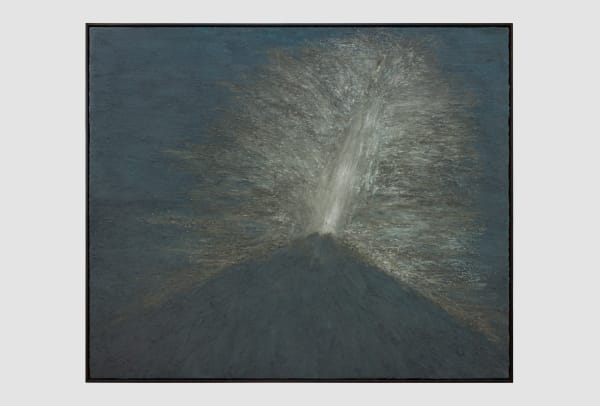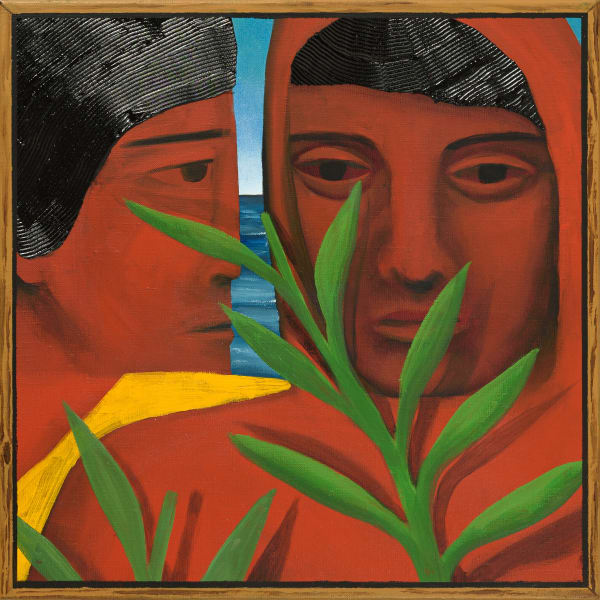Mendes Wood DM at Villa Era Group Show
Mendes Wood DM is proud to announce three exhibitions of work by Cristina Canale, Vojtěch Kovařík, Brice Guilbert and an immersive sound installation by Paulo Nazareth, at Villa Era, a historic 19th-century house and estate in the Italian countryside, located between Milan and Turin.
On view from 26 September - 15 November 2020, the presentation will give visitors the opportunity to engage with the work of four exciting contemporary artists in a unique setting, far from the traditional white-walled context of the urban art gallery.
One of the effects of the global pandemic has been to force a growing portion of our urbanized society to look outside the city, to the countryside, for breathing space and inspiration, and to imagine new priorities, new ways of working, and the possibility of a life lived at a slower pace than what was, until recently, considered to be the norm. These ideas were already so widespread that the Solomon R. Guggenheim Museum, New York, inaugurated Rem Koolhaas’ exhibition Countryside, The Future on the 20th of February this year, though it was closed shortly after due to the pandemic. However, its message about the importance of reimagining the countryside resonates even more powerfully now, after months of unprecedented confinement for so many of us.
In line with this concept, and reflecting the profound changes that have swept through the art world this year, the aim of these shows is to slow down the traditional pace at which we experience art and present it in a bucolic context that is more conducive to engagement and contemplation. The exhibitions will be displayed across the ground and first floors of the Villa, creating a large-scale, immersive experience that blends contemporary art with 19th-century Italian architecture and landscape design.
Cristina Canale (b. 1961, Rio de Janeiro, Brazil) lives and works in Berlin.
After establishing herself on the Brazilian scene as part of the so-called 80s Generation, Canale moved to Germany in the mid-1990s, where she studied at the Düsseldorf Academy of Arts under the supervision of the Dutch conceptual artist Jan Dibbets. Canale’s painting artfully subverts its own subject matter in the way that the figurative elements of the composition are always on the verge of impending dissolution into abstraction. This aesthetic tension between certainty and uncertainty, defined and undefined, transforms everyday scenes, which the artist composes predominantly from female-driven subject matter, making themsomehow seem fleeting and un-fixed, idealised but also maybe imagined, suggesting the possibility to viewers that they are representations of fading memories, or even imagined futures.
Brice Guilbert (b.1979, Montpellier, France) lives and works in Brussels.
Brice Guilbert was born in France but grew up under the shadow of the Piton de la Fournaise on Réunion Island, in the Indian Ocean, which is one of the most active volcanoes in the world. Though he never saw it erupt during his childhood, this volcano left a deep mark on the artist’s psyche, and he has dedicated the last few years to capturing its essence in a series of mostly small-format oil stick paintings.His work displays a masterful use of colour and a sophisticated, multi-textured treatment of his chosen medium, which he applies directly onto the surface of his works, bypassing the need for traditional painting tools to achieve the expressive immediacy and intimacy of drawing.́union Island, in the Indian Ocean, which is one of the most active volcanoes in the world. Though he never saw it erupt during his childhood, this volcano left a deep mark on the artist’s psyche, and he has dedicated the last few years to capturing its essence in a series of mostly small-format oil stick paintings.His work displays a masterful use of colour and a sophisticated, multi-textured treatment of his chosen medium, which he applies directly onto the surface of his works, bypassing the need for traditional painting tools to achieve the expressive immediacy and intimacy of drawing.
-
 Cristina Canale, Victorine, 2020
Cristina Canale, Victorine, 2020 -
 Cristina Canale, Gertrud, 2014
Cristina Canale, Gertrud, 2014 -
 Cristina Canale, Paisagem, 2020
Cristina Canale, Paisagem, 2020 -
 Cristina Canale, Cata-vento, 2014
Cristina Canale, Cata-vento, 2014 -
 Cristina Canale, Henri, 2019
Cristina Canale, Henri, 2019 -
 Cristina Canale, Nostalgia, 2020
Cristina Canale, Nostalgia, 2020 -
 Cristina Canale, Colmeia, 2014
Cristina Canale, Colmeia, 2014 -
 Cristina Canale, Sacolinha cósmica, 2017
Cristina Canale, Sacolinha cósmica, 2017 -
 Cristina Canale, Hut, 2019
Cristina Canale, Hut, 2019 -
 Brice Guilbert, Fournez, 2018
Brice Guilbert, Fournez, 2018 -
 Brice Guilbert, Fournez, 2020
Brice Guilbert, Fournez, 2020 -
 Brice Guilbert, Fournez, 2020
Brice Guilbert, Fournez, 2020 -
 Brice Guilbert, Fournez, 2020
Brice Guilbert, Fournez, 2020 -
 Brice Guilbert, Fournez, 2020
Brice Guilbert, Fournez, 2020 -
 Brice Guilbert, Fournez, 2020
Brice Guilbert, Fournez, 2020 -
 Brice Guilbert, Fournez, 2020
Brice Guilbert, Fournez, 2020 -
 Brice Guilbert, Fournez, 2020
Brice Guilbert, Fournez, 2020 -
 Brice Guilbert, Fournez, 2020
Brice Guilbert, Fournez, 2020 -
 Brice Guilbert, Fournez, 2020
Brice Guilbert, Fournez, 2020 -
 Brice Guilbert, Fournez, 2019
Brice Guilbert, Fournez, 2019 -
 Brice Guilbert, Fournez, 2018
Brice Guilbert, Fournez, 2018 -
 Vojtěch Kovařík, Trojan War, 2020
Vojtěch Kovařík, Trojan War, 2020 -
 Vojtěch Kovařík, Titan, 2020
Vojtěch Kovařík, Titan, 2020 -
 Vojtěch Kovařík, Prometheus Carrying Fire, 2020
Vojtěch Kovařík, Prometheus Carrying Fire, 2020 -
 Vojtěch Kovařík, Omphalos, 2020
Vojtěch Kovařík, Omphalos, 2020 -
 Vojtěch Kovařík, Calypso, 2020
Vojtěch Kovařík, Calypso, 2020 -
 Vojtěch Kovařík, Lovers, 2020
Vojtěch Kovařík, Lovers, 2020 -
 Vojtěch Kovařík, Atlas, 2020
Vojtěch Kovařík, Atlas, 2020 -
 Vojtěch Kovařík, Dionysus, 2020
Vojtěch Kovařík, Dionysus, 2020 -
 Vojtěch Kovařík, Balaneion, 2020
Vojtěch Kovařík, Balaneion, 2020 -
 Vojtěch Kovařík, Miracle, 2020
Vojtěch Kovařík, Miracle, 2020 -
 Vojtěch Kovařík, Island of Ogygia, 2020
Vojtěch Kovařík, Island of Ogygia, 2020 -
 Vojtěch Kovařík, Calypso and Odysseus, 2020
Vojtěch Kovařík, Calypso and Odysseus, 2020 -
 Vojtěch Kovařík, Stucked, 2020
Vojtěch Kovařík, Stucked, 2020 -
 Vojtěch Kovařík, Aphrodite, 2020
Vojtěch Kovařík, Aphrodite, 2020 -
 Vojtěch Kovařík, Odysseia, 2020
Vojtěch Kovařík, Odysseia, 2020 -
![Paulo Nazareth, KA'AGUY RUPIGUA [bichos do mato], 2013](data:image/gif;base64,R0lGODlhAQABAIAAAAAAAP///yH5BAEAAAAALAAAAAABAAEAAAIBRAA7) Paulo Nazareth, KA'AGUY RUPIGUA [bichos do mato], 2013
Paulo Nazareth, KA'AGUY RUPIGUA [bichos do mato], 2013





































![Paulo Nazareth, KA'AGUY RUPIGUA [bichos do mato], 2013](https://artlogic-res.cloudinary.com/w_600,c_limit,f_auto,fl_lossy,q_auto,dpr_auto/artlogicstorage/mendeswooddm/images/view/cf22898b21cbb0890b8b18ec8953f703j/mendeswooddm-paulo-nazareth-ka-aguy-rupigua-bichos-do-mato-2013.jpg)


